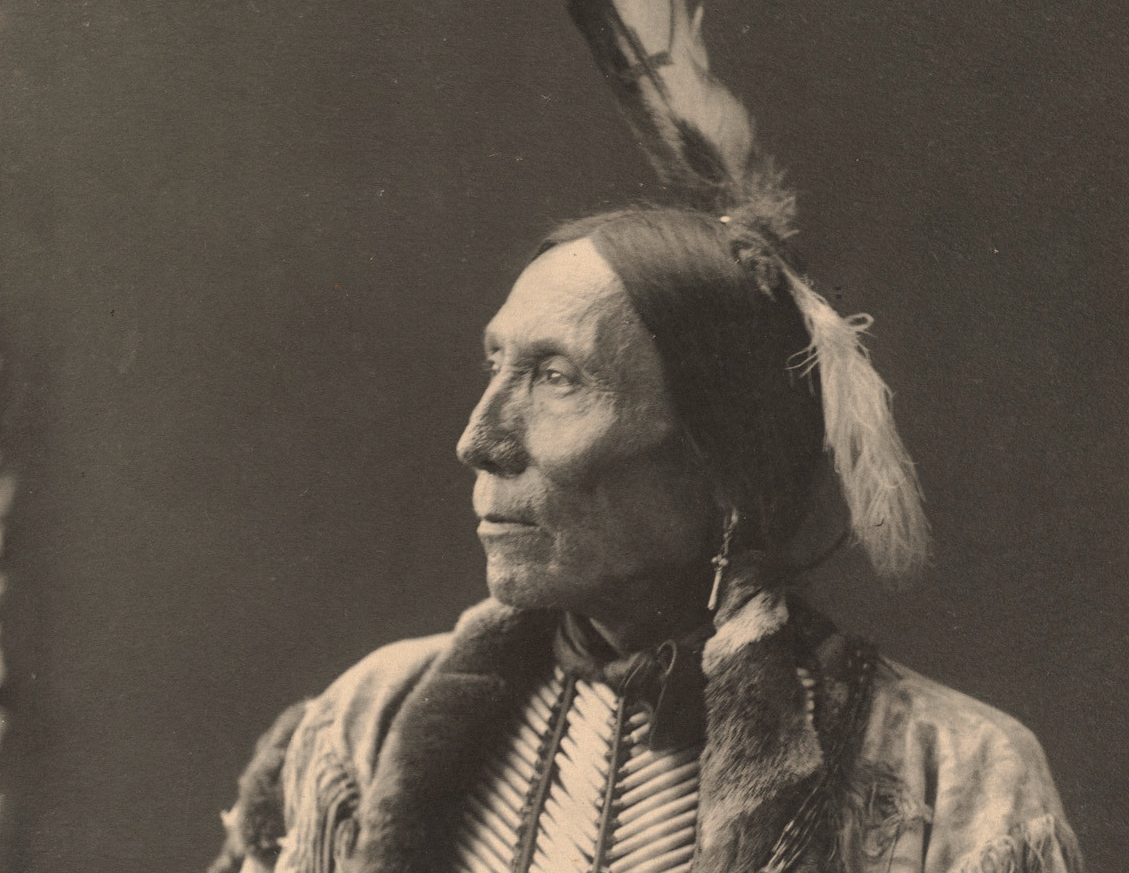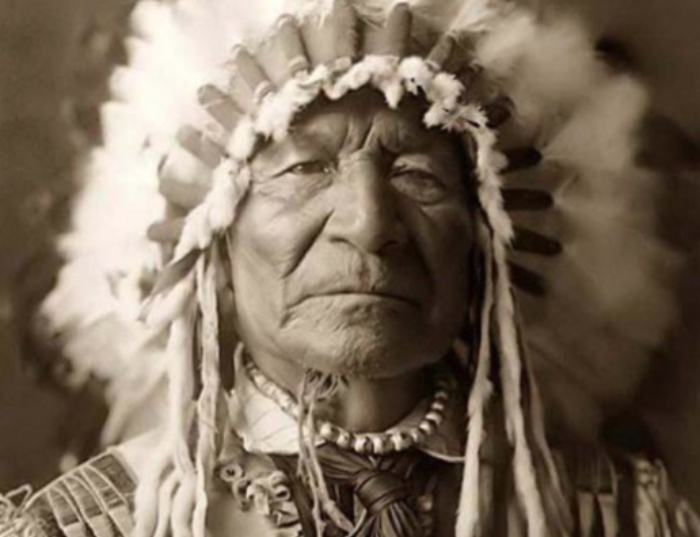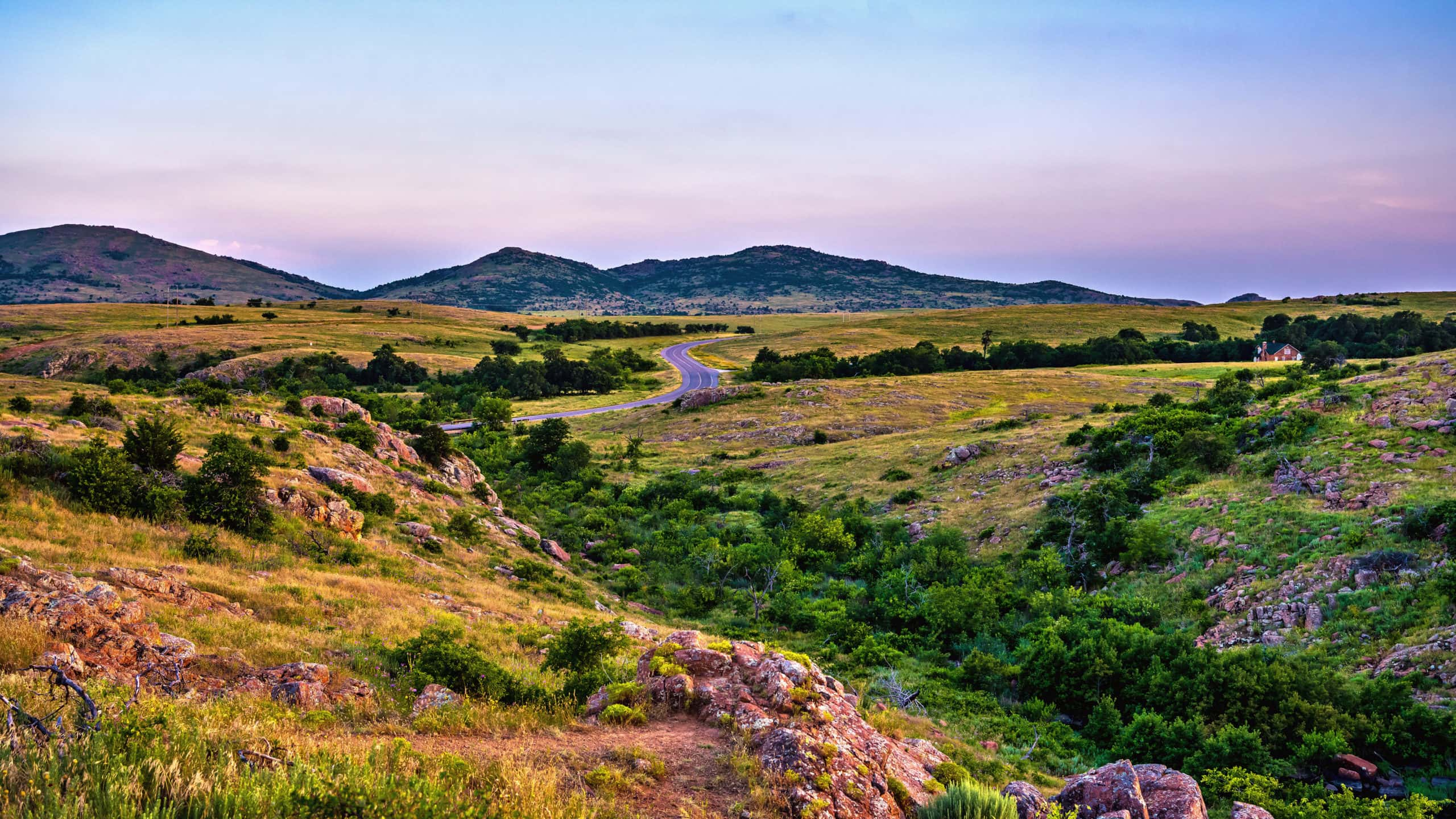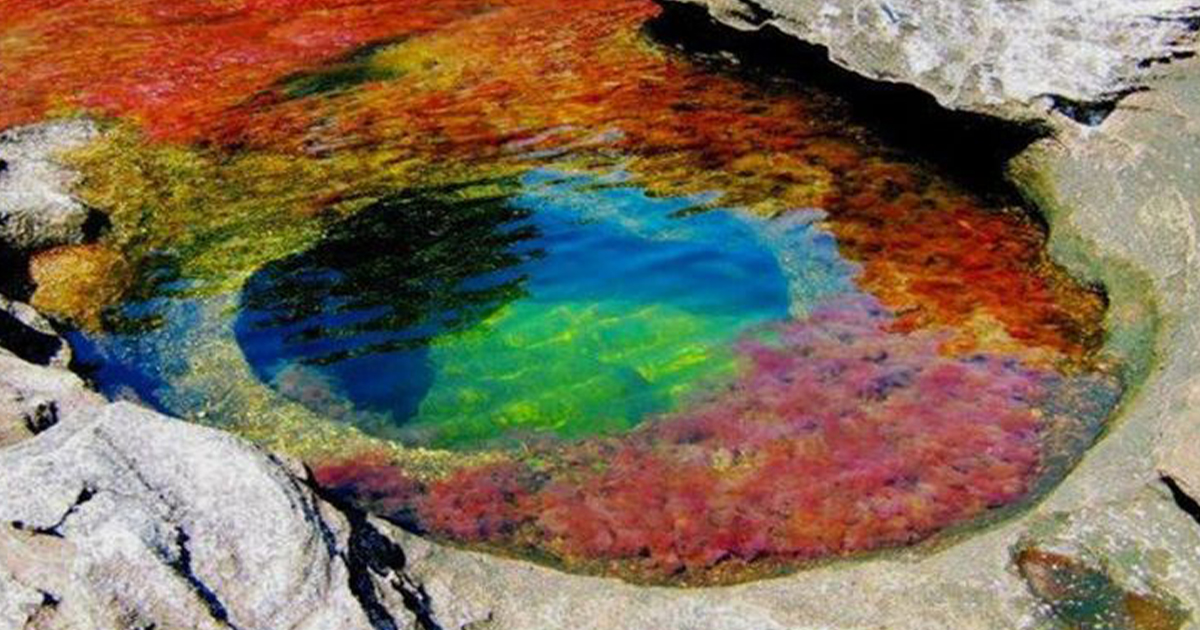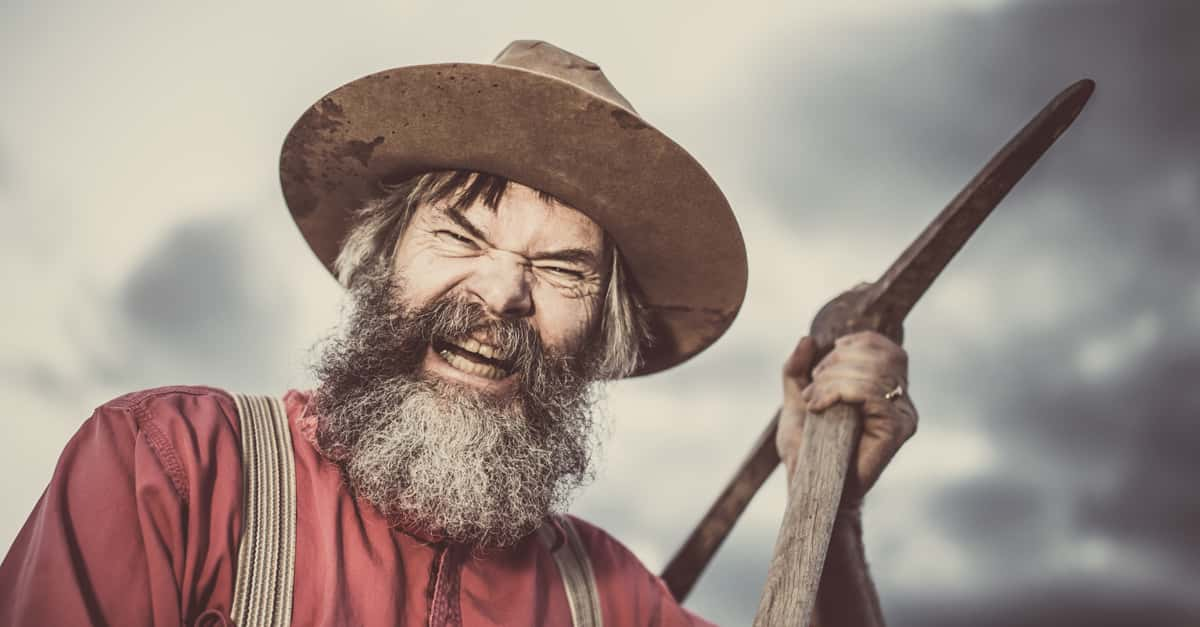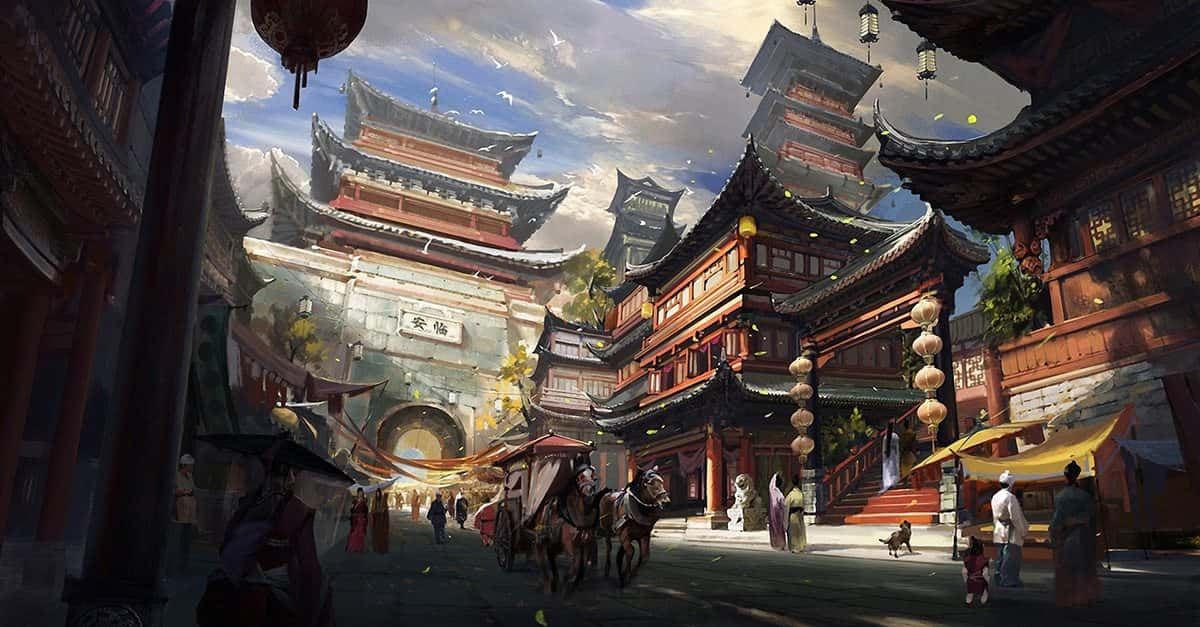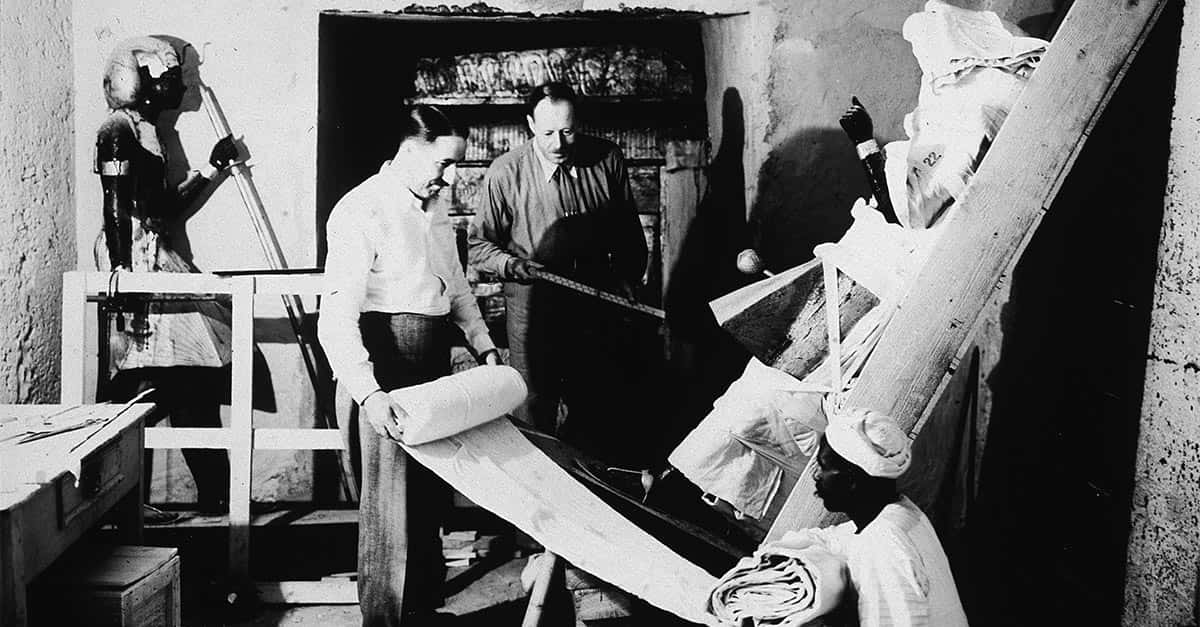The Kiowa Of The Great Plains
The Kiowa lived for centuries on the Great Plains, hunter-gatherers who, like many tribes in the region, relied on the bison hunt for their way of life.
Like the neighboring Comanche and Plains Apache, the Kiowa were one of the mighty warrior tribes of the Great Plains. These three peoples eventually formed an alliance that fiercely resisted against the United States government.
From their colorful clothing to their legendary warrior bands, find out who the Kiowa are and why they continue to fight for their culture today.

They Hunted Bison
The American bison was the most important food source for the Kiowa on the Great Plains. Before the introduction of horses, hunters would track bison on foot.
The Kiowa became masters of the bison hunt—but it could be a treacherous business.
 BPL, CC BY 2.0, Wikimedia Commons
BPL, CC BY 2.0, Wikimedia Commons
They Were Stealth Hunters
Hunting one-ton bison on foot is no easy business, and it required Kiowa hunters to get as close as possible without the animal becoming aware of their presence.
To help disguise their approach, Kiowa hunters would sometimes wear animal pelts on their backs, blending in with the environment until it came time to pounce.
They Used Bows And Spears
Hunters would get as close as possible before firing their arrows—or they'd even get close enough to strike at the bison with a long spear.
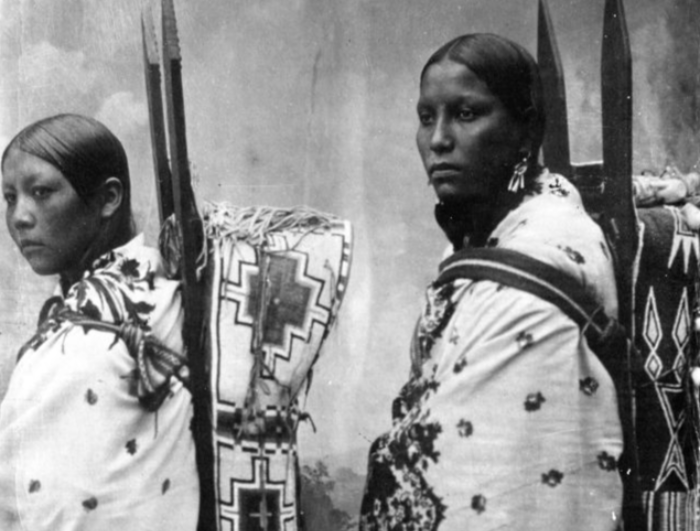 Oklahoma Historical Society , Getty Images
Oklahoma Historical Society , Getty Images
They Used The Bison For Everything
Bison provided material for most of the Kiowa's needs, especially before the arrival of Europeans. Bone was used for tools, and hides were used to make everything from bags to robes to tipis to jugs for cooking and drinking.
 BPL, CC BY 2.0 , Wikimedia Commons
BPL, CC BY 2.0 , Wikimedia Commons
They Stayed On The Move
Since the Kiowa relied so heavily on the bison for sustenance, they had to be ready to follow the herds wherever they went. They lived a nomadic existence, able to carry nearly everything they needed with them.
They Ranged Across The West
The Kiowa exist today as the Kiowa Indian Tribe of Oklahoma, but they originate in Montana and Colorado. At their peak, they controlled vast territories all across the Great Plains.
 UniversalImagesGroup, Getty Images
UniversalImagesGroup, Getty Images
They Lived In Tipis
The Kiowa lived in tipis: tall, conical lodges that could easily be broken down and carried with them when the tribe had to move on.
 Wellcome Collection gallery, CC BY 4.0 , Wikimedia Commons
Wellcome Collection gallery, CC BY 4.0 , Wikimedia Commons
They Were Enormous
Though they could be broken down and packed within minutes, tipis could be up to 25 feet tall. They usually had one entrance flap, and a flap at the peak for smoke to escape.
They Were Comfy
The floors of a tipi would be covered in animal pelts and furs to provide warmth and comfort.
They Were Elaborately Decorated
Kiowa women were extremely skilled artists and textile makers, and tipis were usually covered with intricate designs, often inspired by nature.
Artists also made beautiful designs for clothing, parfleche bags, and more.
They Loved Color
Kiowa designs tend to be incredibly colorful, with a particular preference for red, orange, yellow, blue, and black.
 National Parks Gallery, Picryl
National Parks Gallery, Picryl
They Had Dogs Before Horses
Like many other tribes from the Great Plains, the Kiowa used dogs as pack animals before the introduction of horses, either with packs on their back or by dragging sled-like contraptions called travois.
Women Cared For The Dogs
One of the roles of a Kiowa woman was to care for the tribe's dogs. In fact, dogs and travois sleds were exclusively owned by women.
 Little Adventures, Shutterstock
Little Adventures, Shutterstock
They Had Detailed Fashion
Kiowa men wore skin shirts, moccasins, breechcloths, and leggings, while women wore skin dresses, knee-length moccasins, and pancho-like tops. Feathered headdresses or fur caps were also a styling option.
 James Mooney, Wikimedia Commons
James Mooney, Wikimedia Commons
They Had Their Own Beauty Standards
Kiowa women would paint their hair and faces with vermillion, pierce their ears, and sometimes even get tattoos.
 Unknown Author, Wikimedia Commons
Unknown Author, Wikimedia Commons
They Had All Kinds Of Weapons
Kiowa men were mostly involved in the production of weapons and tools, and they had many of different kinds.
Bows, arrows, spears, tomahawks, war clubs, and knives were just some of the weapons the Kiowa might make, plus tools like saws, scrapers, and needles.
Shields Were Important To Them
A Kiowa warrior's shield was very important to them. They were made of bison hide stretched over a small, wooden frame. They would then adorn them elaborately with feathers, furs, teeth, claws, and paint.
They Were Mostly Monogamous
Monogamy was the most common form of marriage, but men could occasionally take a second wife. Divorce was possible, if not common—though the punishment for adultery was horrific.
 Wellcome Collection gallery, CC BY 4.0, Wikimedia Commons
Wellcome Collection gallery, CC BY 4.0, Wikimedia Commons
Men Could Cut Off Their Wife's Nose
If a Kiowa man caught his wife with another man, he could either kill her or cut off her nose.
They Had A Varied Diet
Though the bison were the Kiowa's most important food source, hunters would also catch antelope, deer, and other wild game, along with fruits, berries, tubers, and vegetables that they would gather.
 George A. Addison, Wikimedia Commons
George A. Addison, Wikimedia Commons
They Had Their Own Version Of Kosher
There were strong food taboos in Kiowa culture. Though they ate bison, deer and other game, they refused to eat bear, fish, or birds.
They Had Gender Roles
Generally, Kiowa men tended to hunt and women tended to gather, but this wasn't a firm social rule. Women could hunt if they wanted to, and vice versa.
They Were Creative Cooks
Kiowa cuisine featured a lot of bison meat, but they cooked it in many different ways, including roasting, boiling, and drying. On certain occasions, they also might consume some parts raw.
They Had A Superfood
Dried meat could be used to make a calorie-rich food called pemmican. The dried meat is ground into a powder, then mixed with equal parts fat or tallow, with other ingredients occasionally added.
Horses Changed Everything
Horses first arrived in Central America with the Spanish. Eventually, the Kiowa acquired horses of their own, likely by raiding Spanish rancheros south of the Rio Grande.
They Made Hunting Easier
Gaining access to horses changed Kiowa culture forever. On horseback, hunters could approach a bison at full speed and pierce it through the heart. But it wasn't just the bison hunt that the introduction of horses changed.
It also changed the way Kiowa warriors fought.
They Were A Warlike People
Like many of the other tribes in the Great Plains, the Kiowa had a fierce warrior culture, and once horses became available, almost all fighting was done on horseback.
Horses also allowed the Kiowa to begin conducting long-distance raids against the Spanish and other tribes.
They Had Many Enemies
The Kiowa were particularly aggressive during the horse culture era of the Great Plains. Their raiding made enemies of the Cheyenne, Arapaho, Navajo, Ute, and Lakota tribes.
They also fought the Pawnee, the Osage, and the Wichita, among others.
 Beinecke Library, CC BY 2.0, Wikimedia Commons
Beinecke Library, CC BY 2.0, Wikimedia Commons
They Feared Ghosts
The Kiowa believed that death was closely associated with dark spirits. They strongly believed in ghosts and other dark spirits that could haunt the land of the living. This made their rituals for the end of life incredibly visceral.
They Grieved Loudly
When a member of the tribe passed, their family was expected to loudly exclaim their grief by wailing, ripping off their clothes, and even shaving their head. There's even record of self-laceration in these moments.
They Moved Quickly
Members of the tribe would then clean the body and bury it as fast as they could, even the same day as possible. The belief was that a quick burial reduced the chances of evil spirits haunting the burial site.
They Didn't Take Anything With Them
After a person passed, the Kiowa would then burn nearly all of their belongings, along with their tipi. Just like they say, you can't take it with you...
 Wolfgang Sauber, CC BY-SA 3.0, Wikimedia Commons
Wolfgang Sauber, CC BY-SA 3.0, Wikimedia Commons
They Went On Vision Quests
Kiowa warriors would go on spiritual vision quests. The spirits would then grant them special powers, which they would depict on their shield.
These shields held incredible spiritual power for the Kiowa, and could stay in a family for generations.
 Silver Horn, Wikimedia Commons
Silver Horn, Wikimedia Commons
Siblings Were Very Important
The extended family was of great importance to the Kiowa, siblings in particular. Family groups were usually led by the oldest brother, and brothers and sisters might stay together for their entire lives.
 UniversalImagesGroup, Getty Images
UniversalImagesGroup, Getty Images
They Elected A Chief
The Kiowa followed an elected chief, called the Topadok'i, who proved themselves based on bravery, intelligence, experience, and charisma.
 Interim Archives, Getty Images
Interim Archives, Getty Images
They Weren't A King
Topadok'i had power and influence, but they weren't a king. They led mostly by consensus, and had to convince the band that their reasoning was sound for anything they did.
They Had Warrior Societies
There were many different shield societies among Kiowa warriors, but if you wanted to join one, you had to earn it.
For example, to join the oldest of the shield societies, the Taime, you had to prove you were wealthy by presenting valuable gifts to the Taime Keeper.
The Eagle Society Was Very Prominent
The Taime Shield Society was the oldest, but the Eagles were just as, if not more powerful.
It's said that a warrior with an Eagle shield was invulnerable in battle, and the legendary Kiowa chief Sitting Bear was a leader of this society.
The Boys Had Their Own Society
Not all societies were hard to get into. The Little Rabbits society was for boys, and all young Kiowa men were automatically a part of it before they grew up and moved onto different societies.
It Was Like School
Once Kiowa boys grew up, they would likely try to get themselves noticed in battle so one of the shield societies would invite them to join.
But being in the Little Rabbits had nothing to do with fighting—it served to socialize and educate young boys, rather than to train them for warfare.
They Had A Doctor Society
If you were a member of the Buffalo Shield Society, that meant you were essentially a Kiowa medic. The Buffalo specialized in healing wounds and broken bones.
According to legend, the society was founded by a woman—but after her, all the members had to be men.
The Owls Could See The Future
Drawing on the powerful sight of an owl, members of the Owl Shield Society communed with spirits to answer questions or foresee the future. In battle, these members would paint themselves white with blue owl designs on their chests.
The Bear Old Woman Society Was Feared
A society of women that harnessed the power of the bear was something to be feared—after all, the bear was considered dangerous and taboo in Kiowa society.
However, it's also believed that the women of the Bear Society created the most powerful medicines in the tribe.
The Best Of The Best
The Koitsenko, or "Real Dogs," only ever had ten members—but these were the ten greatest warriors from the entire Kiowa tribe, as elected by all the members of each band.
You Knew Them On Sight
Each member of the Koitsenko wore a black and red sash to denote their status, while the leader of the group had their own spotted antelope sash.
 Sylvain GRANDADAM, Getty Images
Sylvain GRANDADAM, Getty Images
They Had A Detailed Status System
The highest status people in Kiowa society were called the Onde, and these were great warriors, important chiefs, and spiritual leaders. Then came the Odegupa, including lesser chiefs, medicine men, and prominent warriors.
 Oklahoma Historical Society, Getty Images
Oklahoma Historical Society, Getty Images
They Couldn't All Be Great
After the Odegupa came the Kaan, or mediocre ones. These were essentially commoners, and they made up about half of the tribe. But there was still one class of people below them...
The Dapom Were Outcasts
Dapom means "nobodies". People that the Kiowa considered mad—or at least, so divergent from Kiowa values that they might as well be mad—were deemed Dapom, and they sat at the very bottom of Kiowa society.
 Library of Congress, Getty Images
Library of Congress, Getty Images
There Were Two General Groups
There were many ways to divide the Kiowa into groups and bands, but the broadest political organization was between the Thóqàhyòp, the Northerners or Cold People, and the Sálqáhyói, the Southerners or Hot People.
A Third Grouping Appeared
As Europeans arrived and Kiowa lands started shrinking, a third grouping arose: The Wild Mustang Kiowa, who were part of the final resistance against white settlers.
They Stayed Together In The Winter
Kiowa bands would gather together in large camps during the winter, then when spring came they would spread out across the plains. Then, when the bison arrived, they would join back together for the hunt.
 SMU Central University Libraries, Wikimedia Commons
SMU Central University Libraries, Wikimedia Commons
They Came Together For The Sun Dance
In late June or early July, all the Kiowa bands would come together for the annual Sun Dance, which included complex rituals, ceremonial hunts, and a chance for disparate members of the tribe to reconnect.
They Lived In Bands
Kiowa society was loosely divided into bands, each of which joined the tipi ring at their annual Sun Dance Ritual. Though there could be up to 40 loose bands at a time, the main divisions in the tipi ring were the Biters, the Elks, the Big Shields, the Thieves, Sendeh's Children, and Pulling Up.
They Chiefs Would Discuss
When the tipi circle formed for the Sun Dance, the Topadok'i from each band would gather to discuss issues pertaining to the Kiowa as a whole.
They Performed The Gourd Dance
One of the most important ceremonies during the Sun Dance was and remains the Gourd Dance.
Men adorn their shoulders with elaborate blue and red blankets and wear bandoliers made of silver beads and red skunk berries—the red juice of the berries representing the blood of fallen Kiowa warriors.
 Science & Society Picture Library, Getty Images
Science & Society Picture Library, Getty Images
They Dance To The Drum
While drummers a beat and sing, dancers form a large circle around them. The men in the circle, with a feathered fan in one hand and a rattle in the other, dance to the beat of the drum, lifting their feet in time to the drumbeats.
The first songs tend to be slower, building to a frantic, fever pitch by the last songs.
The Gourd Dance Was A Hit
Though the US Government actively banned Kiowa cultural ceremonies for many years, the Kiowa gourd dance saw a resurgence in the 20th century. Today, many tribes perform the gourd dance at powwows, with their own traditions—though most of them do not have the approval of Kiowa elders.
The Societies Had Their Own Duties
The Sun Dance was also an opportunity for warriors from different bands to join up with the members of their shield societies, and the societies had their own rituals and responsibilities during the ceremony.
They Took From The Spanish
Kiowa raids into Spanish territory gave them access to more horses, but they also acquired firearms, slaves, and metal instruments from the Europeans.
 SMU Central University Libraries, Wikimedia Commons
SMU Central University Libraries, Wikimedia Commons
Their Culture Changed
The Spanish arrival in North America changed Kiowa culture long before they were pushed out of their lands. Things like horses and firearms, which were in very limited supply, completely changed Kiowa concepts of wealth and status.
 National Archives at College Park, Wikimedia Commons
National Archives at College Park, Wikimedia Commons
Horses Were Very Important To Them
As soon as they were introduced, horses became integral to Kiowa society. They allowed the Kiowa to greatly expand their range and influence, and the animals became integrated into to many aspects of Kiowa life.
Soon, the Kiowa were considered the most skilled horsemen on the Great Plains.
They Wanted More
Horses were still new to the continent, and there were never enough to go around. When the Kiowa raided other tribes, the number one thing they wanted was more horses.
A Kiowa man's wealth was measured in his herd of horses.
 The Kiowa artist Sett’an (Little Bear), Wikimedia Commons
The Kiowa artist Sett’an (Little Bear), Wikimedia Commons
They Styled Their Animals
The Kiowa would adorn their horses with body paint from medicine men, both for ritual purposes and for protection in battle.
The Kiowa also adorned their animals with elaborate beaded masks, sometimes with buffalo horns attached.
They Formed An Alliance
The Comanche were another powerful, warlike tribe in the Great Plains region. You might think this would be a problem, but the Kiowa and the Comanche actually formed an alliance that made both of them nearly unstoppable, and it persisted until well into the 20th century.
 National Archives at College Park, Wikimedia Commons
National Archives at College Park, Wikimedia Commons
The Apache Joined Them
The Plains Apache eventually joined the alliance with the Kiowa and the Comanche, and these three tribes proved a powerful force against both encroaching white settlers from the Northeast and Mexican soldiers from the South.
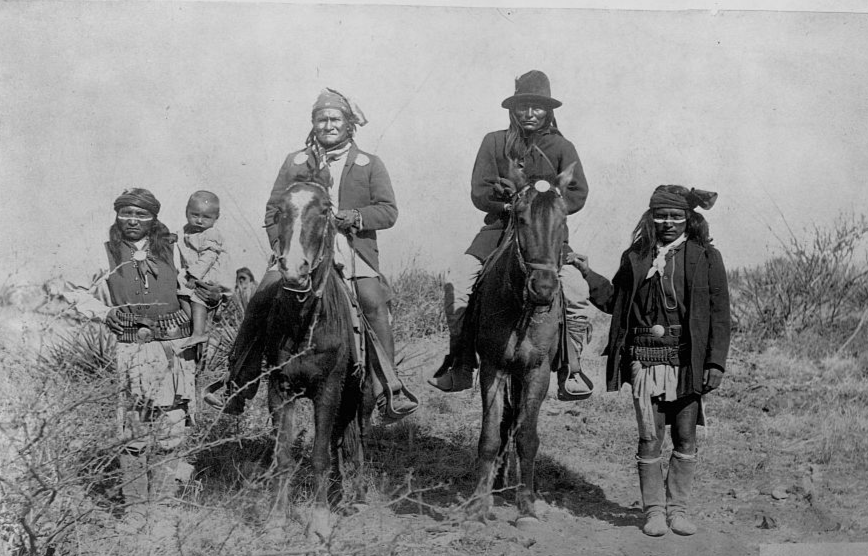 Library of Congress, Getty Images
Library of Congress, Getty Images
They Were Active In Trade
Though raids were a normal part of Kiowa society, their position on the Great Plains was also perfect to take part in the intricate trade network that existed in the region.
They Traded With The English And French
Kiowa raids against other tribes became even more lucrative when they first made contact with the English and the French, with whom they would trade for guns, ammunition, and other European commodities.
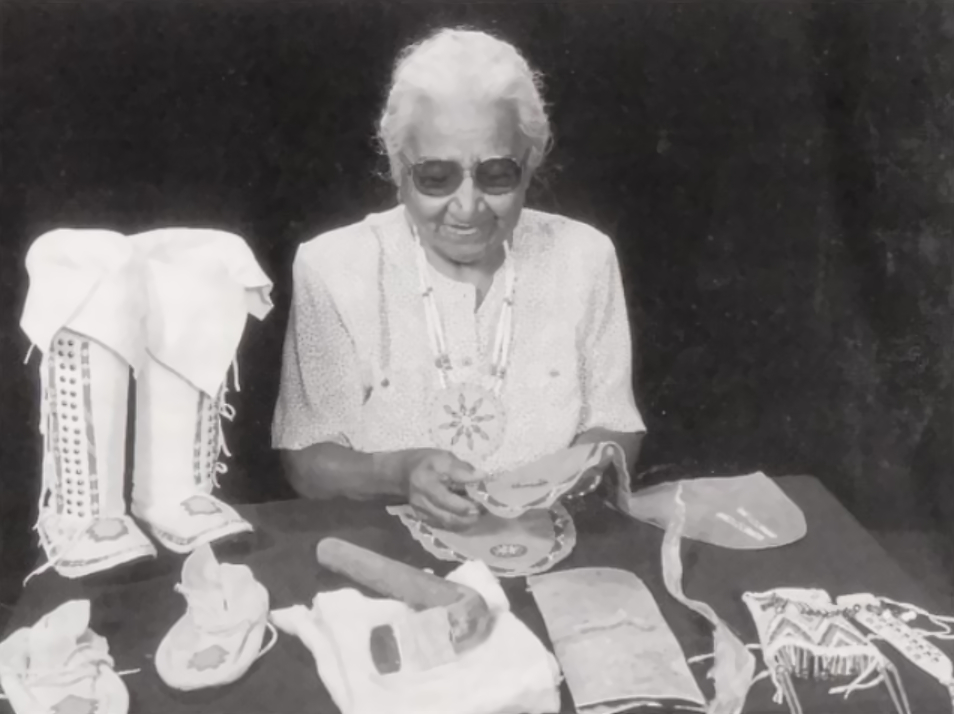 U. S. Department of the Interior Indian Arts and Crafts Board, Wikimedia Commons
U. S. Department of the Interior Indian Arts and Crafts Board, Wikimedia Commons
They Fought The Kiowa Wars
White settlers beginning to arrive in the Great Plains en masse in the early 19th century led to a conflict called the Kiowa Wars, and the tribe fought fiercely against the invaders alongside their allies, the Commanche and the Apache.
Dohasan Was Their Greatest Chief
The most legendary Kiowa Topadok'i was Dohasan, who led the Kiowa for over 30 years in the 19th century. His name meant Little Mountain, and he was born to a mercantile band of Kiowa in the upper Missouri valley in the late 18th century.
 BPL, CC BY 2.0, Wikimedia Commons
BPL, CC BY 2.0, Wikimedia Commons
He Rose Through The Ranks
Before becoming Topadok'i, Dohasan made a name for himself as a daring and devious warrior. He rose to become one of the elite Koitsenko before being named chief.
 Elbridge Ayer Burbank, Wikimedia Commons
Elbridge Ayer Burbank, Wikimedia Commons
He Became Chief In A Hard Time
Warfare on the Great Plains could be brutal. Before Dohasan, a man named A'date was Topadok'i. But in 1833, the members of his village were brutally slaughtered by Osage raiders in a raid while A'date and his warriors were away on a bison hunt.
Soon after the atrocity, the elders deposed A'date and named Dohasan the new Topadok'i.
 Oklahoma Historical Society, Getty Images
Oklahoma Historical Society, Getty Images
He Was A Strong Leader
The most infamous moment of Dohasan's unprecedented 30-year run as Topadok'i was when he led the combined forces of the Kiowa, Comanche, and Plains Apache at the First Battle of Adobe Wells, the largest engagement fought between Native Americans and the US Government on the Great Plains.
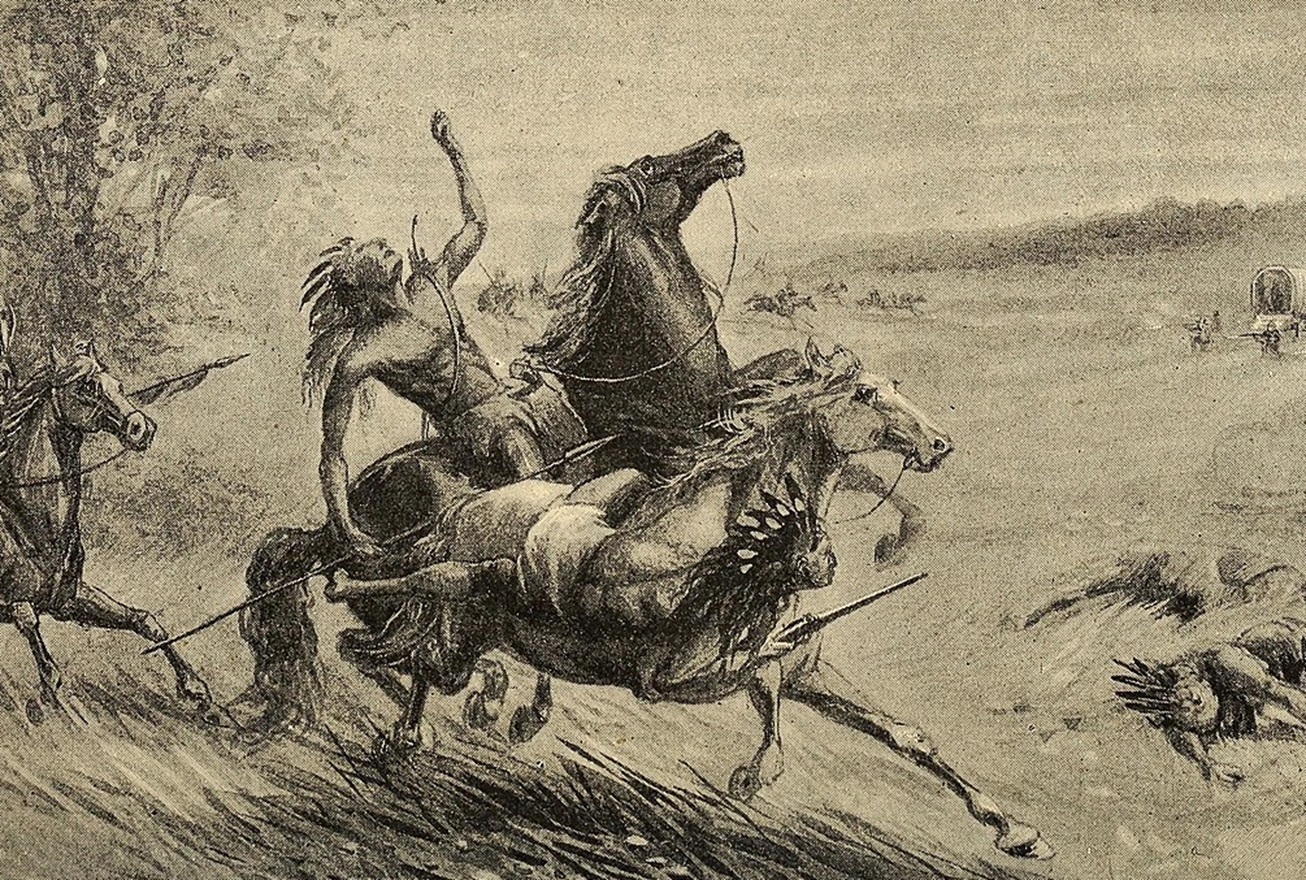 Internet Archive Book Images, Wikimedia Commons
Internet Archive Book Images, Wikimedia Commons
Sitting Bear Was A Legend Among Them
Satank, or Sitting Bear, was another legendary Kiowa warrior and medicine man. A leader of the Koitsenko while Dohasan was chief, Sitting Bear led countless raids against both other tribes and US outposts.
 National Anthropological Archives, Smithsonian Institution, Wikimedia Commons
National Anthropological Archives, Smithsonian Institution, Wikimedia Commons
He Ran Afoul Of General Sherman
William Tecumseh Sherman became well-acquainted with Sitting Bear after the Warren Wagon Train Raid in 1871. He eventually had Sitting Bear and two other tribal leaders arrested and planned to try them for murder in Jacksboro, Texas—the first time ever a Native American had been tried in a white man's court.
But Sitting Bear had other ideas.
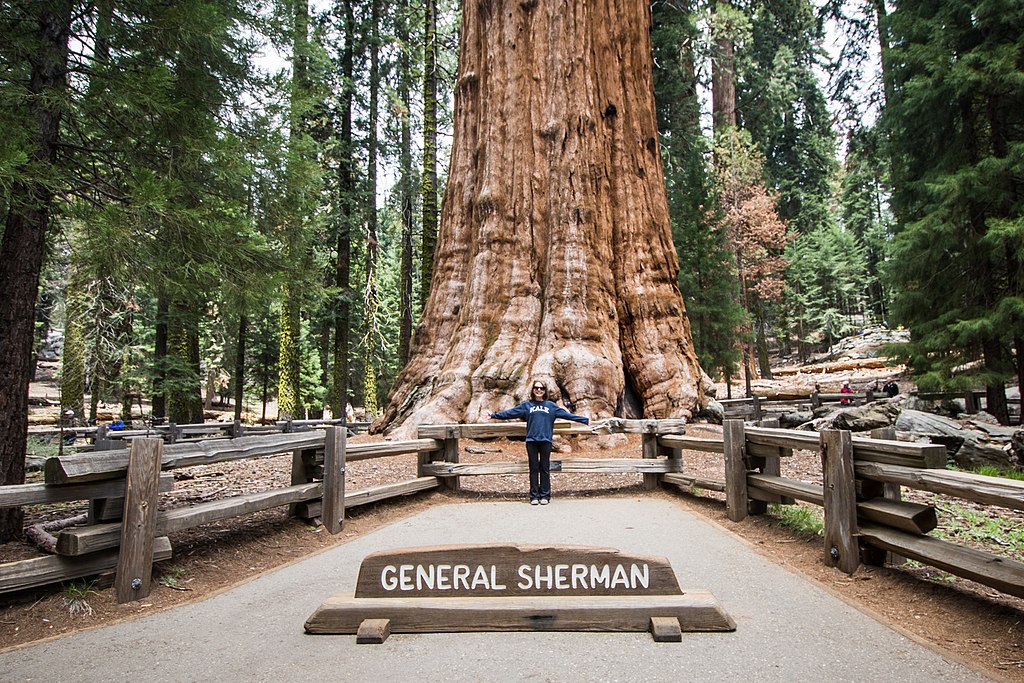 m01229, CC BY-SA 2.0, Wikimedia Commons
m01229, CC BY-SA 2.0, Wikimedia Commons
He Was Going To Go Out On His Terms
Sitting Bear had no intention of being humiliated in a white man's court. He had to be forced into the wagon, at which point he told some Kiowa scouts to tell his family they'd find his body on the road to Jacksboro.
 Oklahoma Historical Society, Getty Images
Oklahoma Historical Society, Getty Images
He Sang His Final Song
While en route, Sitting Bear hid his head under a blanket and began singing the death song of the Koitsenko. The singing eventually stopped—and the guards couldn't see what he was doing next.
 George Catlin, Wikimedia Commons
George Catlin, Wikimedia Commons
He Chewed His Way Free
Under that blanket, Sitting Bear managed to gnaw his wrists down to the bone—just enough to get off his restraints. He managed to get a knife, attack one guard, and get his rifle before the other guards ended him with a volley of shots.
He Foretold The Future
The guards then took Sitting Bear's body and threw it over to the side of the road—just as he had predicted.
 National Archives at College Park, Wikimedia Commons
National Archives at College Park, Wikimedia Commons
They Were The End Of An Era
As the 19th century drew to a close, there was no longer room on the Great Plains for the great Kiowa warriors like Sitting Bear and Douhasan. Like many tribes, the Kiowa at large were relocated to lands in Oklahoma—but not all of them were willing to go.
They Clung To Their Way Of Life
Roaming bands of Kiowa warriors eluded capture and remained at large in the Great Plains until as late as 1875, but they were all either forced into Oklahoma or driven to extinction by the US Army.
They Were Talented Artists
Kiowa were some of the earliest Native American artists to gain recognition in the Western world, being commissioned to create works for international exposition as early as 1891.
They Had Their Own Art Form
Kiowa artists traditionally painted on hides, as can be seen on their elaborate and colorful parfleche bags. But as their way of life was changed, they no longer had the same access to hides.
But they did have access to old accounting ledgers that no one was using anymore. Soon, ledger art was born.
 By Unknown Author, Wikimedia Commons
By Unknown Author, Wikimedia Commons
They Told Their History
Ledger art was created out of necessity as the Kiowa way of life was taken from them, so it's unsurprising that the vast majority of Kiowa ledger art depicts battle scenes, usually against Europeans.
 Howling Wolf, Wikimedia Commons
Howling Wolf, Wikimedia Commons
They Were Warrior Artists
The first known ledger artists were Kiowa warriors who were captured and imprisoned by American forces. These early artists, a bridge to the Kiowa past, were followed by a group called the Kiowa Six, who studied at the University of Oklahoma and whose work was exhibited all around the world.
 Heritage Images , Getty Images
Heritage Images , Getty Images
They Lost More Lands
The Kiowa lived on their reservation until 1906. In the late 1800s, they were deceived by the US Government and sold 2.5 million acres of their land, which they would never get back.
 Larry Smith, CC BY 2.0, Wikimedia Commons
Larry Smith, CC BY 2.0, Wikimedia Commons
They're Still Here
The Kiowa Tribal Council has governed the tribe ever since 1968. There are over 12,000 members registered with the tribe today, mainly living in the Caddo, Comanche, Cotton, Jackson, Kiowa, Tillman, Greer, and Harmon counties of Oklahoma.
 SMU Central University Libraries, Wikimedia Commons
SMU Central University Libraries, Wikimedia Commons























